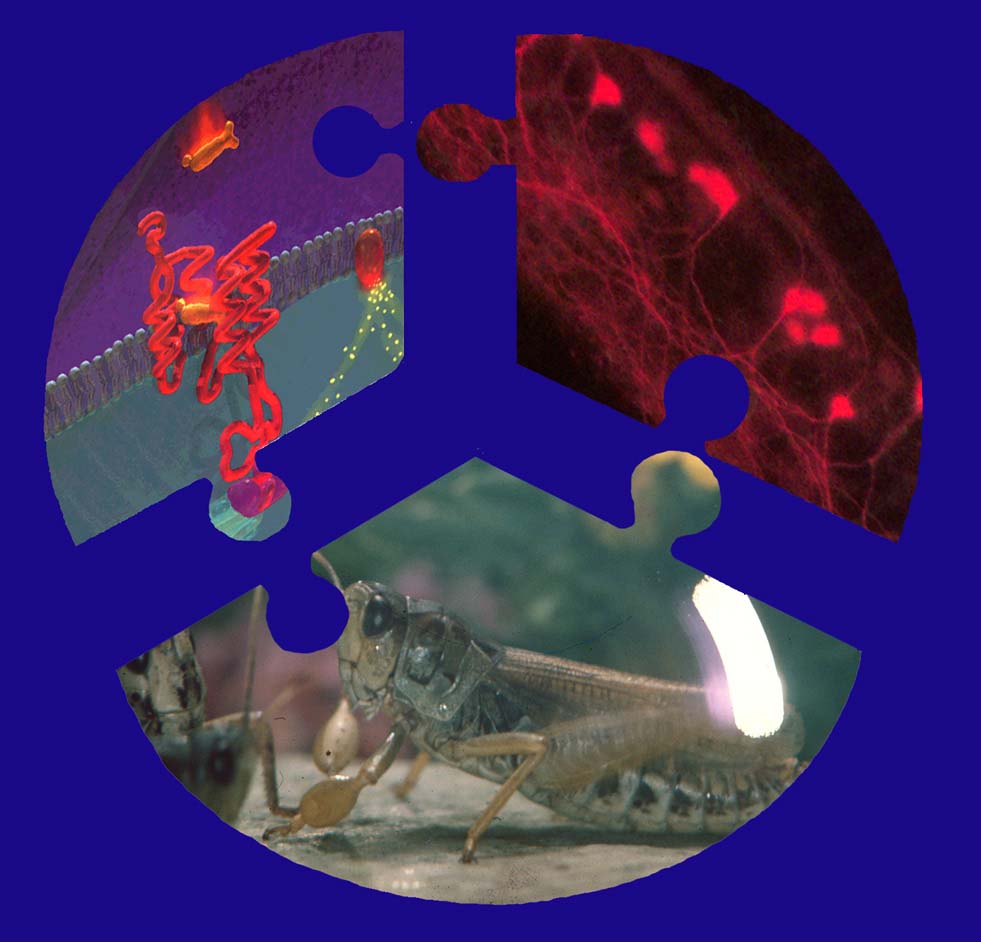
Department of Cellular Neurobiology
Johann-Friedrich-Blumenbach-Institute for Zoology and Anthropology

Johann-Friedrich-Blumenbach-Institute for Zoology and Anthropology

Dr. Ralf Heinrich
Dept. of Cellular Neurobiology
Schwann-Schleiden Research Center
Julia-Lermontowa-Weg 3
37077 Göttingen
Phone: +49(0)551 / 39177958
Fax: +49(0)551 / 39177952
E-mail: rheinri1@gwdg.de
Vertebrates and invertebrates evolved from common ancestors that already
possessed neurons, neurosecretory systems and structured central nervous
systems. Though nervous systems of invertebrates are typically less complex
than those of vertebrates (especially mammals) they share many molecular and functional
characteristics. We study the neural basis of insect behaviors and mechanisms
underlying neuroprotection and neuroregeneration in insect nervous systems with
an evolutionary perspective.
1) The cytokine erythropoietin (Epo) mediates neuroprotective and neuroregenerative functions in insects similar to its beneficial effects described in mammals including humans. Similar structural and functional characteristics of the Epo-binding receptors, partly shared transduction pathways that prevent apoptosis and the functional implication in neuroprotective and neuroregenerative processes in both mammalian and insect species suggest that Epo-like signaling was already established in their common ancestors. We study insects, both with in vitro and in vivo approaches, to identify “ancient” Epo-like signals and neuroprotective Epo-receptors and to characterize the beneficial molecular mechanisms mediated by these signalling systems. This “detour through evolutionary history” led to the identfication of cytokine receptor-like factor 3 (CRLF3) as a receptor for human recombinant Epo that mediates anti-apoptotic effects in serum-deprived or hypoxia-exposed insect neurons. CRLF3 belongs to class I helical cytokine receptors that mediate pleiotropic cellular reactions to injury and diverse physiological challenges. It evolved with the eumetazoan nervous system, is highly conserved between insects and vertebrates and typically expressed in various tissues.
2) Apoptosis plays a major
role in development, tissue renewal and the progression of degenerative
diseases. Similar molecular players and mechanisms in vertebrates and
invertebrates indicated that the complex "mammalian-like" apoptosis
regulatory network was already present in early metazoans. Our recent
studies identified the pro-apoptotic function of insect
acetylcholinesterase as another (previously unreported in
invertebrates) shared characteristic between vertebrate and insect apoptosis.
3) Social behavior is the product of complex interactions between various types of neurons that integrate external sensory information with internal physiological states. We study the regulation of social behaviors by synaptic molecules (e.g. neuroligins, transmitters) and the neurochemical mechanisms of motivational states (mediated by hormones, neuromdulators and transmitters) with a combination of neuroethological, pharmacological, electrophysiological, histochemical and immunocytochemical methods. Most studies focus on sex-specific mating and aggressive behaviors of acoustically communicating grasshoppers and fruit flies.
designed by A. Wirmer